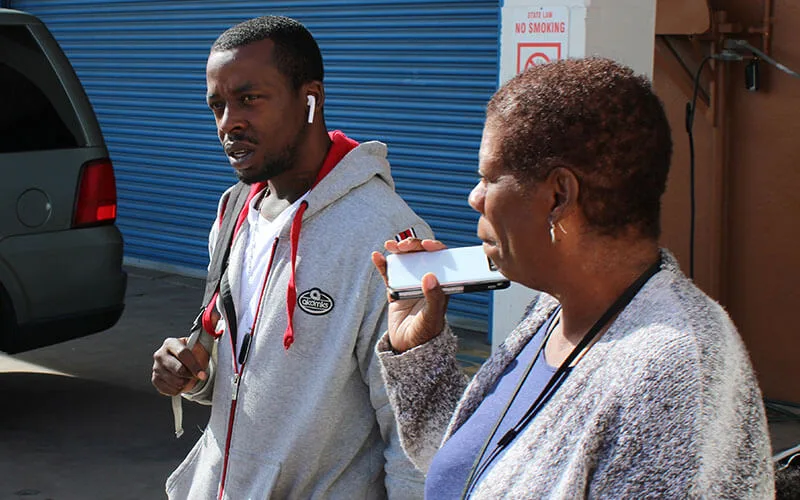
Housing prices and commuter costs make Phoenix the least affordable city in the country, and officials are struggling to find solutions.
Michael Beasley groaned inwardly as he moved to turn off his alarm. The clock read 4:30 a.m. He knew four hours of sleep wasn’t enough, but what choice did he have?
Michael lives with his partner Angelinda and their four children at the UMOM New Day Centers family shelter in central Phoenix. With no car and a full-time job, Michael has to catch the 5:30 a.m. bus with his three oldest kids in order to get them to school on time, and him to Walmart before his shift begins. Although his time in the military made him no stranger to early mornings, Michael says the exhaustion is something he’ll never get used to.
“Having to get on the bus and travel from 5:30 in the morning, and then not getting home until midnight every night, I don’t even know what to say or how to describe it,” said Michael. “I really don’t have time to do anything because I’m always out.”
Michael is one of about 100,000 Phoenix residents without access to a vehicle. Phoenix has long been seen as a commuter city, with public transit ranked as one of the worst in the nation for a city its size. Having a car can be the difference between a 25-minute commute and an 18-hour day like Michael’s.

Phoenix, Affordable? Not So Much
Driving comes at a cost, and a new study on the combined cost of housing and commuting pokes a massive hole in one of Phoenix’s perceived benefits: affordability.
The Citizens Budget Commission in New York released a report in January comparing the living costs of 20 American cities with the largest economies. The two costs considered were housing and commuting expenses, which are recommended to only take up 45% of a household’s income. The cost burden comes from a nationwide affordability study done by the Center for Neighborhood Technology. Only 5 of the top 20 cities meet that threshold and Phoenix came in at the bottom of the list.
When considering cost alone, the reports found that Phoenix is the third most affordable city in the country. But when the equation factors in wages, Phoenix’s standing plummets. Of the 20 major US cities in the study, only Detroit and Miami have lower annual incomes than Phoenix’s $54,037. Even with comparatively low living costs, housing and transportation costs take up 53% of the average Phoenician’s income.
Reality vs. Reputation
As Arizona’s largest city, Phoenix’s affordable reputation spans back to the 1960s. NPR podcast (Un)Affordable chronicled the rise and fall of the city’s affordability, and noted that the population quadrupled from 100,000 in 1950 to 400,000 by 1960. Housing costs also rose with the population. Phoenix is now the sixth-largest city in the country and boasts a population of 1.7 million.
But wages remained stagnant until 2017, creating a large gap between housing costs and income. The final blow to Phoenix’s claim to affordable living came in 2018 when the city’s Housing Opportunity Index fell below the national average for the first time since the Index’s creation.
“We need more affordable housing in Phoenix, and more housing for our workforce,” said Phoenix Mayor Kate Gallego. “Our city is rapidly expanding and the housing stock is not keeping pace.”
Housing affordability is one of Gallego’s primary issues since she was elected in 2018. In her State of the City address, Gallego stressed the need for city programs like PHX C.A.R.E.S., the city’s homelessness outreach department, to help residents in need.

“Low wage earners maintain a fragile balance in their lives. Any single unexpected expense can send the entire household into crisis, and possibly onto the streets,” Gallego said. “We all know the easiest way to reduce homelessness is to stop it before it starts and programs like this work to keep people in their homes.”
“After we lost our apartment, we didn’t have nowhere else to go.”
Nowhere to Go
An unexpected crisis is exactly how Michael and his family ended up in a shelter. Angelinda did not qualify for maternity leave and was unable to keep her job after giving birth to their now 18-month-old son. Soon after, Michael lost his job. They started to fall behind on bills, and after failing to find the money to pay rent, the family was evicted from their apartment.
“I’m currently looking for a job, but I also have to take care of the children,” Angelinda said.
Michael has since found new employment at Walmart but said it’s been difficult to find stable employment since he left the military. It’s been nearly a decade since his four years in the service, but he says he still struggles with the transition from its rigid lifestyle.
“Going from military to civilian life is a hard transition, but we’re getting through it,” Michael said. “After we lost our apartment, we didn’t have nowhere else to go, so we started looking for shelters.”
A Temporary Haven
The family of six found refuge at UMOM’s Family Housing Hub. But the family’s caseworker, Linda, told them living at the family shelter is designed to be temporary, and they needed to actively find a permanent solution.
“They’re a wonderful family, and I know it’s so hard for them to get their kids to school and do everything they need to do,” said Linda, who asked that only her first name be used. “They barely even have time to look for a place to live.”
But the longer Michael and his family stay, the longer the shelter’s waitlist becomes. The shelter’s waiting list was 50 families long in 2015. There are now 200 families on the list with an 11-week wait for emergency housing.
“Without a car, though, we don’t have time to look,” said Michael. “We can see, maybe one place a day. That’s it. We’re looking to get a three-bedroom place, but that’s really expensive. It takes a lot.”
That’s why when Michael was handed the keys to a new Lincoln Navigator on Friday, his eyes filled with tears.
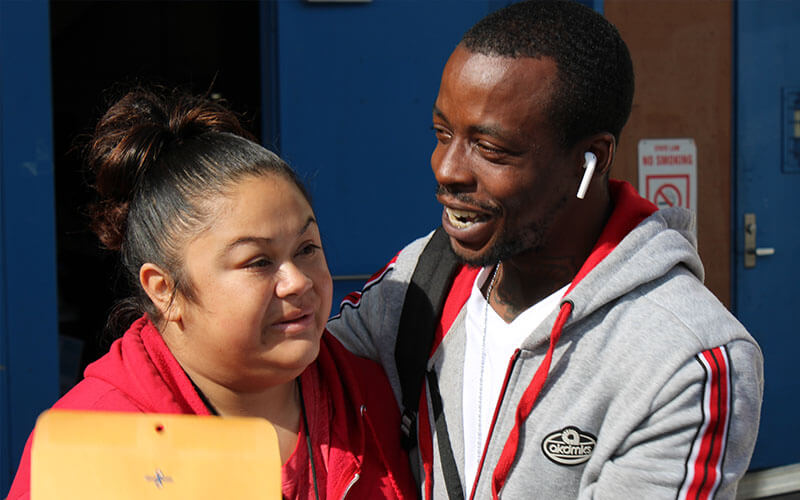
A Fighting Chance
In 2017, retired veteran Brian Chaplin got word that the Arizona Department of Veterans Services had an automobile problem. People were trying to donate vehicles for veterans, but as a government agency, the VA was unable to accept them. So he called the VA and made a deal.
“Now when someone brings them a car, they call me,” Chaplin said. “And I fix ‘em up and find someone who needs a ride.”
Chaplin formed a Phoenix-based nonprofit organization called the Bravo Brotherhood, and over the following year, repaired and donated eight vehicles. When he got his ninth project, the Lincoln Navigator, Chaplin decided to save it for someone special.
“It’s big – seats eight people – so I wanted to make sure it went to a family,” Chaplin said. “Everyone needs help at some point in their lives. Giving veterans and their families a vehicle gives them that fighting chance and a hand up in life.”
Chaplin spent months coordinating with Linda to find a good time to surprise Michael and his family. Chaplin said they would have given them the car sooner, but the family was so busy bussing to school and work that finding time to sign over the title was nearly impossible.
However, it was worth the wait, and when Chaplin handed Michael the keys, he started to cry as well.

Free Comes with a Cost
With the Lincoln ready to go, Michael and Angelinda immediately thought of their children.
“When we pick them up in this, they’re going to be so excited!” Angelinda said, hugging Michael.
But the euphoria turned to concern as they received their next gift: a $1,000 certificate to cover their first few months of insurance.
It suddenly hit them: gas, insurance, and maintenance. Their new ride comes with a trunk full of bills they can’t afford to pay.
“I’m extremely grateful, and I know we’ll make it work,” said Michael. “But gas, insurance, oil changes – it’s a lot, you know?”
Michael’s concerns mirror those of many Phoenix residents. The Citizens Budget Commission estimates transportation costs take up 25% of the average resident’s median household income. That’s 10% higher than the recommended cost.
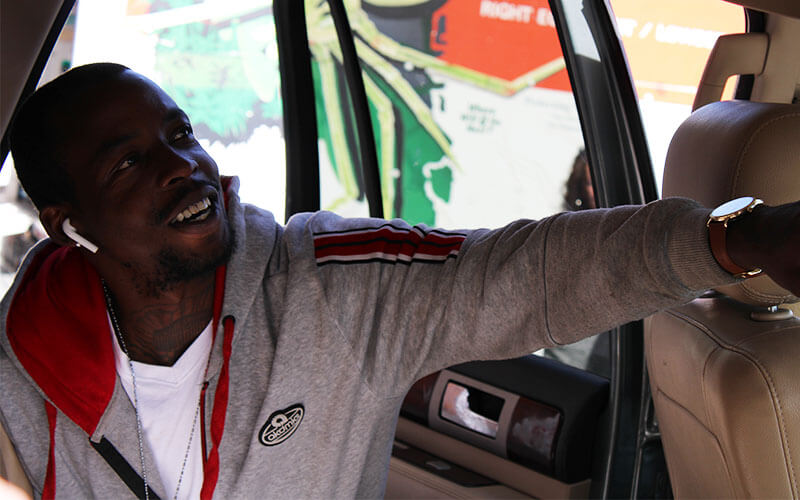
Bringing Affordable Back to Phoenix
Gallego once more addressed this issue at a forum on affordability at the US Conference of Mayors last week, saying commuter costs need to be reduced before the burden becomes too great.
“Like many cities, transportation is a huge cost for our residents, and if we can diminish that part of the burden on the budget, we think they’re more likely to be able to thrive and continue to grow in Phoenix,” she said.
Major efforts have been made to build up the city’s transit infrastructure. Phoenix voters approved the expansion of the light rail for a third time in August, and Gallego says she hopes to see a citywide rail system in the future. Last summer, Phoenix also partnered with Lyft, Food City, and United Way to offer $5 roundtrip rides to grocery stores. This was available to low-income communities with few healthy, affordable food options nearby, known as food deserts.
But while the city works on improving commuter options, relying on public transit still means long days for Michael and his family. That’s why, despite the added cost, he couldn’t stop smiling after Chaplin handed him the keys to the Navigator.
“Now I can get to work, the kids can get to school, and we can find a place,” Michael said. “It’s going to eliminate a lot of the problems that we have.”
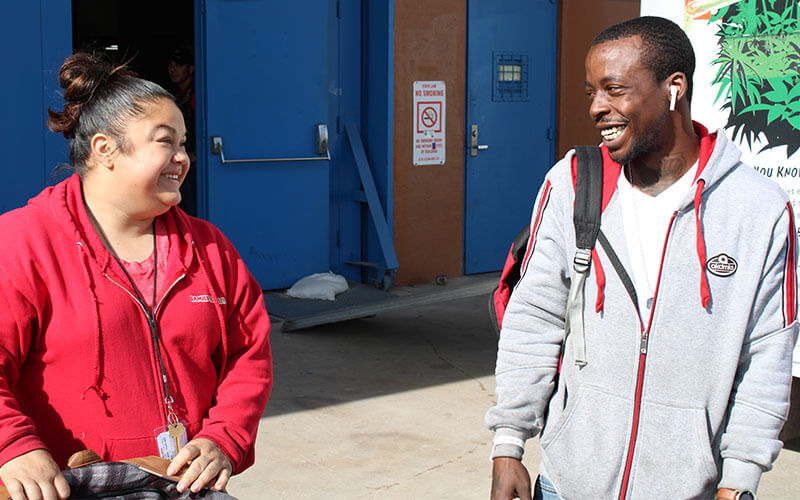
Politics

Democrats successfully force vote on repealing 1864 abortion ban, passes House
The Arizona legislature moved forward two bills Wednesday that would repeal the state’s 1864 abortion ban. A bill to repeal the ban has been...

State Official: 1864 abortion ban gives Arizona ‘black eye’
Arizona’s role at the forefront of the climate crisis, defending democratic elections, and protecting reproductive rights has caught the attention...
Local News

Arizona Sens. Anthony Kern, Jake Hoffman, indicted for fake election scheme
Eighteen individuals involved in a conspiracy to overturn Arizona’s election results in 2020 were indicted by a grand jury Wednesday and charged...
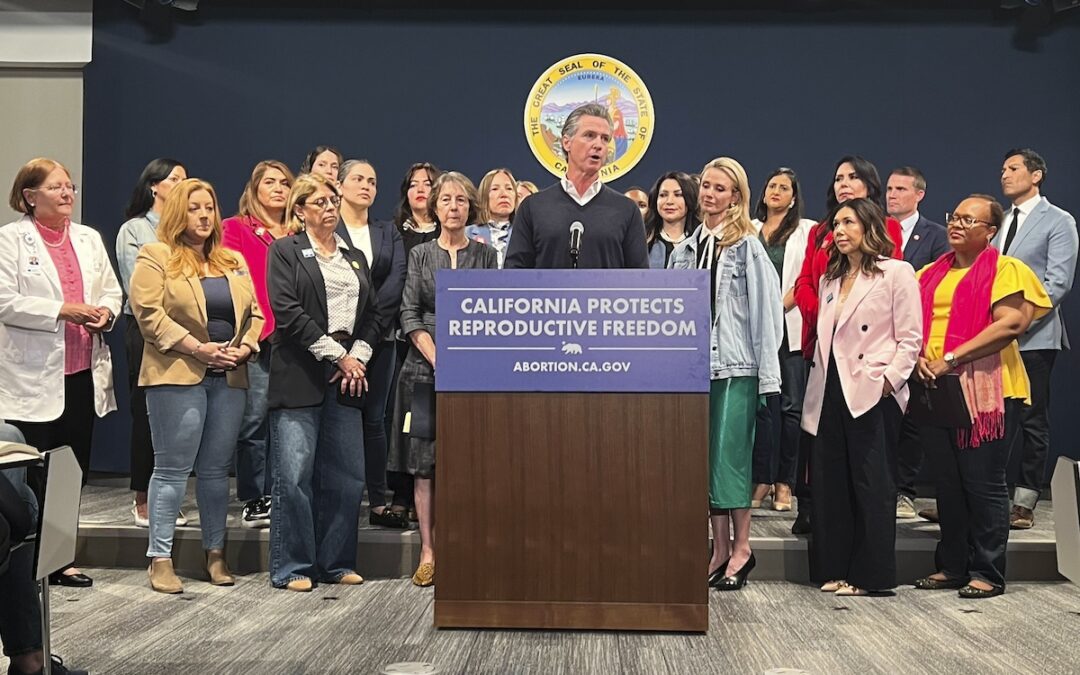
Gov. Gavin Newsom wants to let Arizona doctors provide abortions in California
California law generally allows abortion up to the point of fetal viability, which is around 24 weeks. SACRAMENTO, Calif. (AP) — Arizona doctors...





